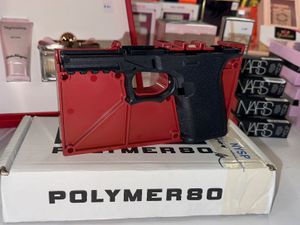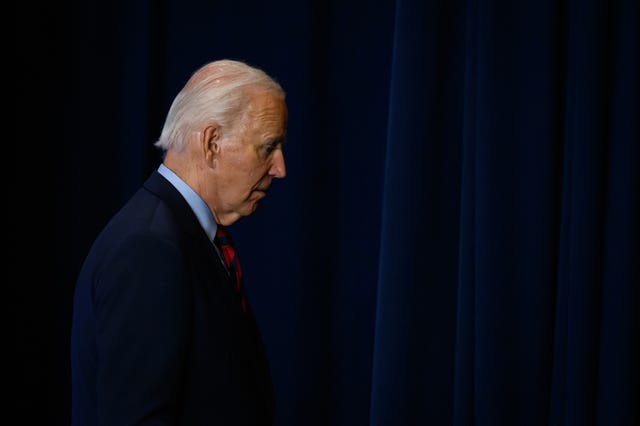US Supreme Court backs Biden rule on ‘ghost gun’ kits
Since the federal rule was finalised, ghost gun numbers have flattened out or declined in several major cities.

The US Supreme Court has upheld a Biden administration regulation on so-called ghost guns, clearing the way for the continued use of serial numbers, background checks and age verification requirements to buy them in kits online.
The 7-2 opinion found that existing gun laws allow regulation of the kits which are increasingly linked to crime.
Sales of the nearly impossible-to-trace homemade firearms known grew exponentially after kits came on to the market that let people easily build them at home, Justice Neil Gorsuch wrote in the majority opinion.
“Some home hobbyists enjoy assembling them. But criminals also find them attractive,” he said.

The number of ghost guns found at crime scenes around the country has soared, according to federal data. Fewer than 1,700 were recovered by law enforcement in 2017, but that had grown to 27,000 in 2023, according to Justice Department data.
Since the federal rule was finalised ghost gun numbers have flattened or declined in several major cities, including New York, Los Angeles, Philadelphia and Baltimore, according to court documents. Manufacturing of miscellaneous gun parts also dropped 36% overall, the Justice Department has said.
Ghost guns are any privately made firearms without the serial numbers that allow police to trace weapons used in crime. The 2022 regulation was focused on kits sold online with everything needed to build a functioning firearm, sometimes in less than 30 minutes, according to court documents.
Ghost guns have been used in high-profile crimes, including a mass shooting in Philadelphia that left five people dead.
Finalised at the direction of then-president Joe Biden, the “frame and receiver” rule requires companies to treat the kits like other firearms by adding serial numbers, running background checks and verifying that buyers are 21 or older.
Gun groups challenged the rule in court in a case known as Garland vs VanDerStok. Most crimes are committed with traditional firearms, not ghost guns, they argued.
It is legal for people to build their own firearms at home, the challengers said, arguing that the Bureau of Alcohol, Tobacco, Firearms and Explosives overstepped its authority by trying to regulate the kits.
The Supreme Court majority disagreed, pointing out that the law gives the ATF the power to regulate items that can be quickly made into working firearms.
“The ‘Buy Build Shoot’ kit can be ‘readily converted’ into a firearm, for it requires no more time, effort, expertise or specialised tools to complete,” Judge Gorsuch wrote, referring to a specific product.
Some kits may take more time to build into guns and therefore fall outside of the ATF’s power, he wrote, but many of the most popular kits are subject to regulation.
The justices had previously allowed the rule to stay in place while the lawsuit played out.
The court previously struck down a firearm regulation from Donald Trump’s first administration, a ban on gun accessories known as bump stocks that enable rapid fire. The court has also expanded Second Amendment rights with a finding that modern gun regulations must fit within historical traditions.
In a dissent, Justice Clarence Thomas wrote the kits are only firearm parts and should not be subject to a regulation that could open the door to rules on other popular weapons.
“Congress could have authorised ATF to regulate any part of a firearm or any object readily convertible into one,” he wrote. “But it did not.”





